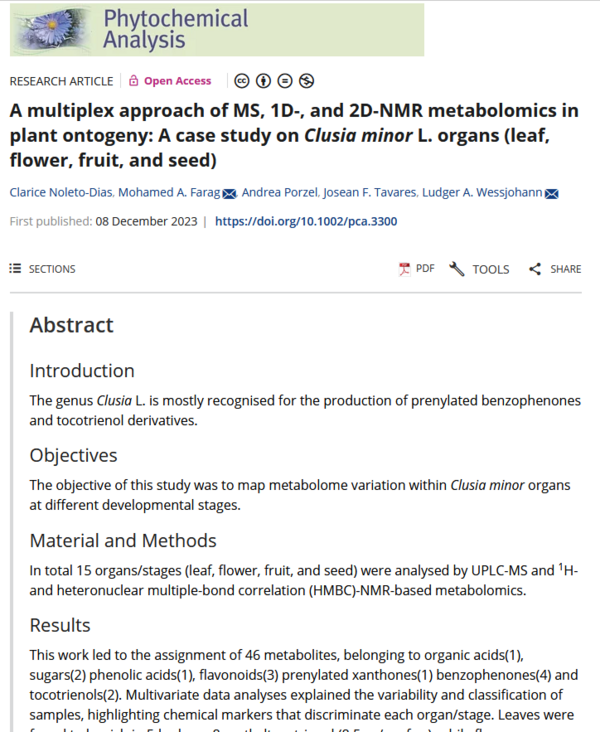Metabolomics of Brazilian medicinal plant.
IPB chemists and partners from Egypt and Brazil have recently carried out a comprehensive mapping of the metabolite variations of Clusia minor at different stages of development. They analyzed the plant's leaves, flowers, fruits and seeds at different stages of maturity using UPLC-MS and NMR-based metabolomics. As a result, they could categorize a total of 46 metabolites into substance classes, such as acids, sugars and flavonoids, and determine chemical markers for the individual plant organs and developmental stages.
The genus Clusia is distributed in Central and South America with 321 species. All species are rich in secondary metabolites with different biological activities, such as antibacterial and anti-inflammatory effects. In their flowers, the plants produce a resin that attracts bees, which collect it to build nests to protect themselves from insect attacks. Clusia minor is used in traditional medicine to treat pain, inflammation and warts. Until now, there have been no detailed phytochemical analyses of this interesting medicinal plant. Their study provides a better understanding of the plant's developmental stages in which maximum production of bioactives occurs, the scientists conclude. The results form the basis for further experiments to identify the biosynthetic enzymes involved.



